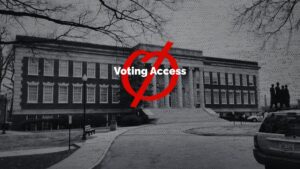Source: NC Newsline
Diversity at colleges and universities, which is already trending down in numerous states, could see that downward trajectory spread throughout the country following the U.S. Supreme Court’s ruling that struck down affirmative action.
According to NC Newsline, the number of Black and Hispanic students attending state universities has dropped in states that have tried to increase diversity at schools without using race-based admissions policies.
Nine states – Arizona, California, Florida, Idaho, Michigan, Nebraska, New Hampshire, Oklahoma and Washington – had affirmative action bans in place before the high court ruled.
Those states, and others that have tried eschewing race-based admissions, have not seen success from their efforts. Some of the strategies these states have tried in order to maintain diversity include expensive recruitment drives, elimination of legacy admissions and guaranteed admission to high-ranking high school students.
As NC Newsline reported, states like California, Oklahoma, Nebraska and Texas have seen varying degrees of success – or a lack of it – with their non-race-based admissions programs.
California ended affirmative action in 1998 and began guaranteeing admission to most University of California schools to top-performing students from most of the state’s high schools. The state university system also changed its admissions review process to consider students’ academic achievements “in light of the opportunities available to [them].“
Black and Hispanic enrollment at elite state universities like Berkeley and UCLA plummeted, but enrollment at other UC schools fell less dramatically and then recovered more quickly.
“California has not identified a silver bullet that maintains racial diversity at the same level as race-based affirmative action,” said Zachary Bleemer, an assistant professor of economics at Princeton University, who has extensively studied California’s higher education system.
Bleemer estimates that California’s automatic admission program and its more comprehensive review process “tend to increase Black and Hispanic enrollment by about a third of what race-based affirmative action would be.”
Texas also implemented automatic admissions programs for top-performing students. Since 1996, Texas has had a “Top 10% Plan” that offers the top 10% of students from every Texas high school automatic admission to many state universities. The thought behind the plan was that “since many Texas high schools are mostly Black or Hispanic” offering admission to the top 10% of students would increase minority enrollment.
Eighteen years of data from Texas that were examined in a 2020 working paper found that the program “did not result in meaningful changes” and had little impact on the racial diversity at the state’s flagship universities – the University of Texas at Austin and Texas A&M.
As for other states like Oklahoma and Nebraska, who have reported that ending affirmative action made little to no difference in minority enrollment, Bleemer said that can be explained by the fact that “most students were getting in already.”
Bleemer told NC Newsline that the Supreme Court ruling will have the greatest impact at “quite selective schools with robust affirmative action programs,” and cited schools such as the University of Virginia, the University of North Carolina, Georgia Tech and the Ohio State University.





